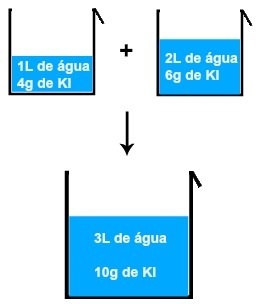THE pressure cooker it is commonly used to cook food more quickly that in open containers would take a long time to be ready. As the name says, it works by a increased internal pressure of the vessel, greater than atmospheric pressure, which consequently causes the boiling point of the liquid increases.
When we close the pan, it already contains an amount of air that has a pressure equal to atmospheric pressure. Since there is a rubber in it that seals the pan, when we heat up, the water vapors increase and its escape is impeded. In this way, the pressure of the trapped air adds to that of the vapors, causing the internal pressure to become even greater. With high pressure, the liquid takes longer to come to the boil and cooks food more quickly.
Microscopically, this relationship of pressure and boiling point occurs because when we start to heat a liquid, for example, water, the agitation of its molecules increases and it starts to move more quickly into the state of steam; forming the bubbles we see at the bottom of the container. At first, the pressure this steam exerts is less than atmospheric pressure, so the water does not boil immediately. But over time there is an increase in temperature; thus, the internal pressure of the bubble becomes equal to and ultimately higher than that of the atmosphere and then boils.
Atmospheric pressure is 1 atm or 760 mm of mercury at sea level, but inside the pressure cooker it can range from 1.44 atm to 2 atm. Also, another notable fact is that while the boiling point of water is 100°C at sea level, the internal temperature of the pressure cooker can reach around 120°C.
Do not stop now... There's more after the advertising ;)
Therefore, we can see that if the atmospheric pressure is lower, as in higher places, the pressure needed for the water vapor inside the bubble to equal that of the atmosphere and to rise (boil) will be lower. So she will have a lowest boiling point. Already if the pressure is higher, such as in lower places and inside the pressure cooker, the boiling point will be higher.
However, the pressure inside the pot only increases to a limit. Any excess pressure pushes the pin into the center of the cap, called a counterweight valve, releasing the steam. If there was any impediment in this valve, another output is the additional valve, which is usually red in color.
That is why, attention: Always keep the counterbalance valve clean to avoid the risk of explosion, which can lead to serious and even fatal injuries.
By Jennifer Fogaça
Graduated in Chemistry
Would you like to reference this text in a school or academic work? Look:
FOGAÇA, Jennifer Rocha Vargas. "Operation of the pressure cooker"; Brazil School. Available in: https://brasilescola.uol.com.br/quimica/funcionamento-panela-pressao.htm. Accessed on June 27, 2021.



